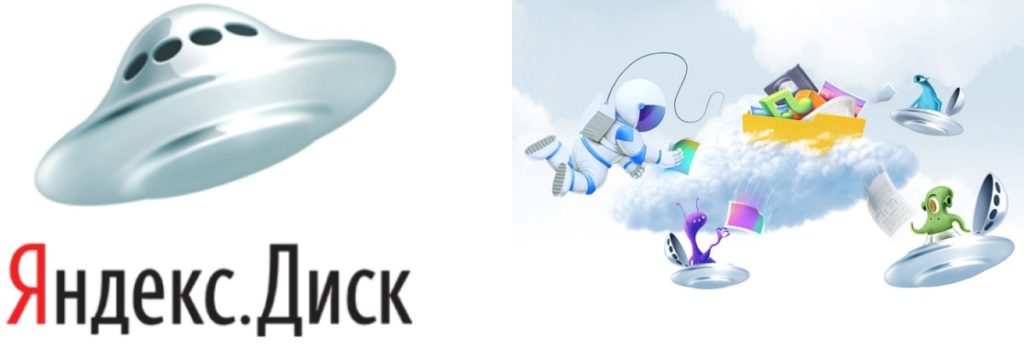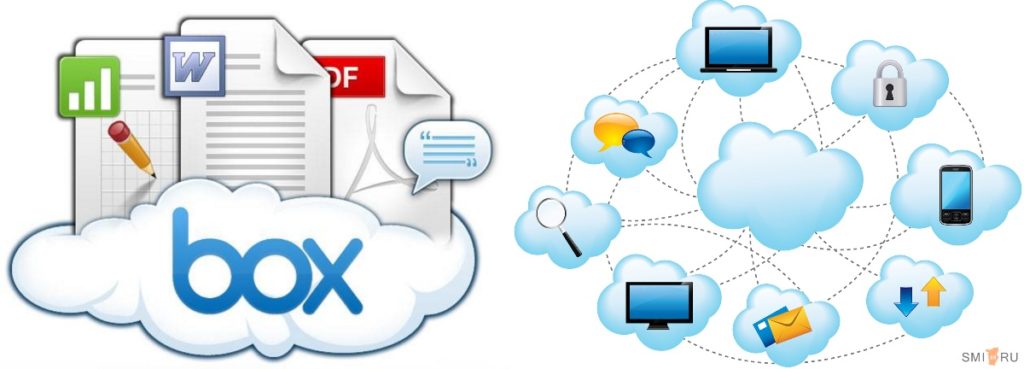Ranking of the best cloud storage for 2020

The user of a smartphone, computer or laptop, on average, has several gigabytes of cloud storage available for free. For example, users of services such as OneDrive, GoogleDrive and Mail.ru have at least 10 GB of memory available.
There is not always enough space, and switching from one server to another is inconvenient. In this case, you need to find additional storage space. Consider the popular free and paid cloud services for 2020: for what purposes they are suitable, what conditions are offered by well-known players in this market.
What is cloud
Most people store photos, videos and files on a computer (phone, laptop) or hard drive (flash drive), but this is far from the best way to store data.
A reliable and secure way is a virtual server (cloud). Online storage is usually accessed by a third party via APIs or standard storage protocols. Compute providers also offer value-added services to protect, collect, analyze, and manage large amounts of information.
Geographically, the servers are located remotely from each other. For the client, working with the cloud is absolutely transparent. With a high-speed Internet, you might not even notice that you are working with content that is stored miles away from your computer.

Why do you need online storage
Data storage and backup is provided by the cloud center. Among the priorities:
- information storage;
- the server can be paid or free, private or corporate;
- correct saving in case of software or hardware failures;
- joint processing of large amounts of data;
- copies (replicas) are created for each uploaded file on separate servers;
- interaction with user folders or other services;
- no need to create your own infrastructure for storing information;
- reducing costs for corporate clients;
- use and integration of the repository with different sets of third-party products;
- payment for use, not for the whole server.
What are cloud services
The choice of a suitable resource depends on the organization's device and the specifics of the information that is planned to be stored in the cloud service and IT infrastructure.
Main divisions:
- File. They are characterized by the principle of work. Provide storage of large amounts of information and save up to 60% of useful disk space. Information is stored in the form of file folders organized in a hierarchical structure. However, when you accumulate more volume, it is difficult to find the desired file in the pile of folders and attachments.Not used where speed is needed.
- Blocky. They are characterized by increased productivity. Used to work with databases. They are called block, because the stored information is divided into blocks of the same size. Such a cloud duplicates information, speeds up caching (performance). It is characterized by availability, durability, low latency. The user can dynamically increase capacity, monitor, tune performance, create file systems. The disadvantage is the complexity of management.
- Object. The file structure has been replaced with a flat address space allowing the user to quickly retrieve information. That is, there are no file systems. They are distinguished by great possibilities for storing metadata, a verification mechanism. The content is flexibly scalable. Suitable for business applications, backups, static site data storage, or content sharing. It is used by such popular services as Facebook, DropBox due to its ability to work with a large volume of constantly growing information. There is no need to plan the volume - just load the data. For some operations, for example, transactional loads are inefficient.
Control over information
Provided with certain services, namely:
- IaaS is a core cloud computing service. Allows you to access computing resources. It consists in renting an IT infrastructure (servers, storage) with pay as you go.
- PaaS is a platform for hosting, developing web and mobile applications. Here you can forget about the basic settings of the server infrastructure.
- SaaS is the delivery of software applications. Lets you use the same on all devices by accessing the cloud.
Criterias of choice
When considering the option of storing content in the cloud, you need to pay attention to the following requirements:
- reliability, continuous availability at any time in the presence of the Internet;
- data safety, restoration, backup;
- security, type of encryption;
- bandwidth, scaling;
- administration, navigation;
- cost.
There are many services (paid, free) for storing videos, photos, so as not to be afraid for their future fate. Depending on what opportunities a particular service provides, we have compiled an overview of the most popular storages for 2020.
Best free cloud storage of 2020
Dropbox

A specialized service designed for storing backups, archives. Not tied to a specific platform. It was launched in 2007 by 2 students at the Massachusetts Institute of Technology.
This is the first smart space to bring the content of a workgroup together in one place. With Dropbox, you can save time with prompts that help you prioritize tasks - reduce search time and stay focused on work. It takes a few minutes to connect to it.
- free mobile application with versions for Linux and BlackBerry;
- the ability to use service tools;
- availability of professional functions;
- "Smart" synchronization, integration with a large number of third-party services;
- organization of the online working space.
- only 2 GB of space in the cloud;
- there are many restrictions for free subscribers.
OneDrive

Used to protect work files, making them accessible across devices. In May 2008, Microsoft released the first network attached storage, which later, after several changes, became OneDrive (2014).
The service allows you to collaborate on documents, share and synchronize content with your computer. The "Personal Vault" folder is available for free. Additionally, Office online is built in.
- integration with Windows 10;
- you can create documents, tables or presentations online;
- a large number of languages, including Russian;
- for desktop operating systems - "Files on Demand" function;
- reliable protection of user data - the popular AES-256 algorithm, HTTPS, TLS protocols.
- there is no desktop version of Linux;
- tiny amount of the budget option - 5 GB;
- on a free plan - advertising in web clients.
Mega

After the closure of MegaUpload, Kim Dotcom and his team began work on a highly encrypted service. All content uploaded to the cloud is encrypted, so there is no chance to open access to data even when requested by government services.
This is the largest free online storage. The service is relatively young - the full range of possibilities has not yet been realized. Currently, you can only use the web interface (via a browser).
- fifty GB of free storage;
- reliable data encryption;
- unlimited storage time of content;
- supports many languages, including Russian;
- active users - convenient browser extensions;
- own synchronization program - Mega Sync Client.
- when loading or unloading content, the load on the processor increases;
- with free use - low speed.
Cloud Mail.ru

The network storage takes one of the first places in terms of attendance in the Russian Internet. The project was launched in 2013 to store a variety of content. Allows you to create, move, edit folders, files, as well as view them without downloading to a computer, provide access to other users.
An online office is provided for creation and editing. The design (a combination of yellow, blue) resembles Mail.ru.
- clear interface;
- the cloud is available to users in Russia and the CIS countries;
- high speed of downloading and uploading;
- uploaded content is checked by Kaspersky Anti-Virus;
- mobile version for iOS, Android;
- mail content is separated from content uploaded to the cloud;
- mail does not take up space in the cloud storage.
- free storage space - 8 GB;
- few additional functions;
- use is complicated by the mechanics of integration into Windows;
- mobile app does not sync.
Yandex.Disk

The service provides cloud storage for various content - files, photos, videos. The information is automatically loaded to disk, which allows you to free up space on your phone or tablet. Free 3 GB, expandable to 10 GB. Allows you to create, upload or download folders, and sort content.
Intuitive interface. Access from the web interface or programs that work with Windows, Linux, Mac OS X. Also available for iOS, Symbian, Android and Windows Phone. Supports a large amount of information without downloading, including .zip archives.
- works from any device connected to the Internet;
- support for web versions of Microsoft Office 365 applications;
- the ability to listen to music (mp3);
- free storage - up to 10 GB;
- for saved files - mark private, public;
- applications for Linux and iOS.
- advertising on the free version;
- inconvenient content sharing interface;
- limited number of downloads;
- conditions of paid subscriptions.
Rating of the most popular paid storage services for 2020
iCloud Drive

Apple's cloud for iOS and OS X lets you store and edit photos, videos, spreadsheets, and presentations. Using the service, the user can store data from the Mac desktop and use it from any device on the iOS platform. For example, a user is editing content on a computer and at any time can switch to another device to continue working there.
Since iOS 9 has its own app. For reliability, 128-bit SSL, AES encryption is used.
- high speed of content synchronization on Apple devices;
- integration with other Apple devices;
- acceptable prices;
- saving gameplay when deleting a game.
- the cloud does not support files larger than 15 GB;
- not suitable for classic work with documents;
- fills up quickly when used;
- few "intermediate" tariffs;
- encryption keys are stored on the server.
OpenDrive

Collaboration management storage enables you to quickly and easily integrate cloud services directly into your product. The API is used to store and retrieve different amounts of data from anywhere on the Internet.
It appeared in 2007 when USB keys were not big enough. The company is 100% cloud-based, resulting in the need for project management that also supports this type of collaboration. For this purpose, a cloud office suite was created.
The server helps you store, sync, share content and collaborate with other devices.
- price - from $ 5 per month;
- copying directories from a computer;
- protection allows people with permission to only view files without downloading.
- low speed of information exchange;
- errors during synchronization.
Box

The project was launched in 2005 as a service for business tasks and personal use. Suitable for working with images (using Picnik), office documents (Zoho) - creates a local disk synchronized with the cloud. Thanks to iOS Files, it's compatible with iPhones and iPads.
It is convenient to work with Word, Excel, PowerPoint. Supports iOS, Android, BlackBerry, WebOS, Windows and Windows Phone devices.
Box also created a separate repository by industry - for education, medicine, media. There are free options and business accounts. In the future, the company plans to implement the Box Workflow business module with templates for industries.
- great for collaboration;
- for regular users - 10 GB of free space;
- on paid accounts, the storage size is unlimited;
- the information is kept until the client deletes it himself.
- it is difficult for an ordinary user to choose a tariff plan;
- file size is limited for free account holders.
Google drive

A service from Google Inc for storing content in the cloud to free up space on your devices and keep your files safe. Data is synchronized between online account, mobile device and computer. Available for Android and iOS platforms.
If you install the application on a tablet or smartphone, then you can work with the content anywhere, anytime. The service recognizes objects and text in scanned documents, so you can instantly find everything you need. Free 5 GB is provided.
- clear management - first folders, then files;
- the service is the file system for Google services;
- large amount of free content storage;
- sharing a subscription among several users.
- photos are inconvenient to look at, but you can do it in Google Photos;
- when creating a file, you cannot specify the destination folder;
- content doesn't always sync;
- low speed of downloading and uploading data.
pCloud

A reliable platform for both individuals and businesses. Designed to store information and access it from anywhere in the world.
The company is based in Switzerland and follows strict rules for the protection of personal data. PCloud is a cloud storage designed with all user requirements in mind. Data is contained in certified data centers with first-class security measures.
The program is available for Apple, Android, Mac, Windows, Linux. Creates a virtual drive when installed, which significantly increases the space of the device being used.
- works like a virtual hard disk: does not store folders locally;
- profitable tariff plans with monthly payment;
- the ability to buy a lifetime license;
- cryptographic content protection schemes;
- ten GB on a free plan.
- paid cryptographic protection;
- download limit for third-party users.
Output
With the help of the cloud, it is possible to remotely solve the issue of accumulating and processing data without purchasing expensive resources. The service is in demand by ordinary users, entrepreneurs, designers, programmers and marketers.
In other words, anyone can use cloud storage to solve issues related to a large amount of information.
new entries
Categories
Useful
Popular articles
-

Top rating of the best and inexpensive scooters up to 50 cubic meters in 2020
Views: 97661 -

Rating of the best materials for noise insulation for an apartment in 2020
Views: 95022 -

Rating of cheap analogues of expensive drugs for flu and colds for 2020
Views: 91750 -

The best men's running shoes in 2020
Views: 87680 -

Top ranking of the best smartwatches 2020 - price-quality
Views: 85091 -

Best Complex Vitamins in 2020
Views: 84801 -

The best dye for gray hair - 2020 top ranking
Views: 82406 -

Rating of the best wood paints for interior use in 2020
Views: 77202 -

Ranking of the best action cameras from China in 2020
Views: 75269 -

Rating of the best spinning reels in 2020
Views: 74827 -

The most effective calcium supplements for adults and children in 2020
Views: 72462 -

Top rating of the best means for male potency in 2020 with a description
Views: 68296









